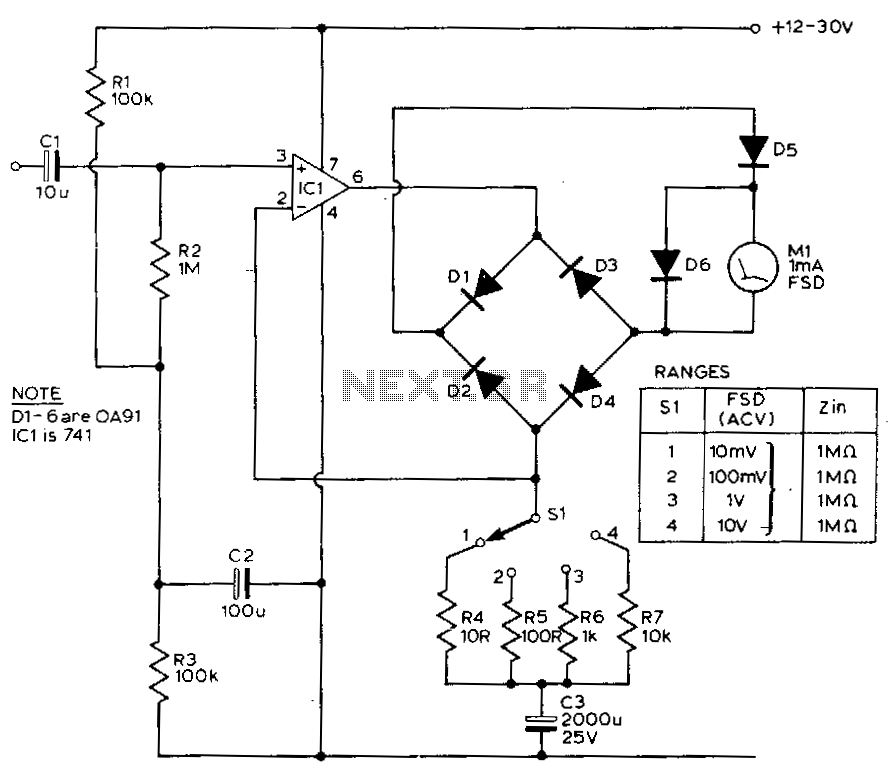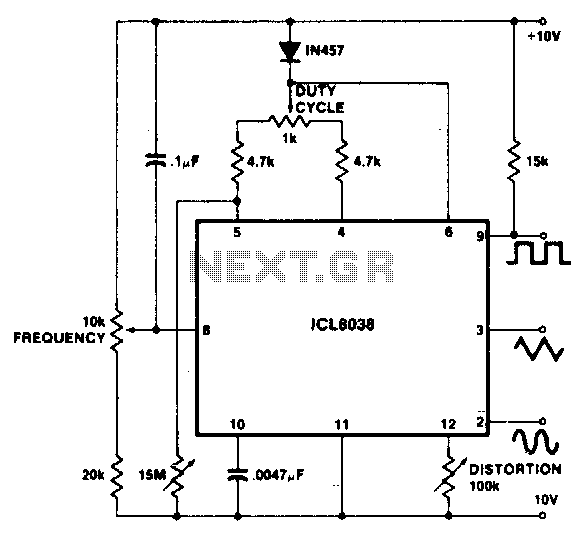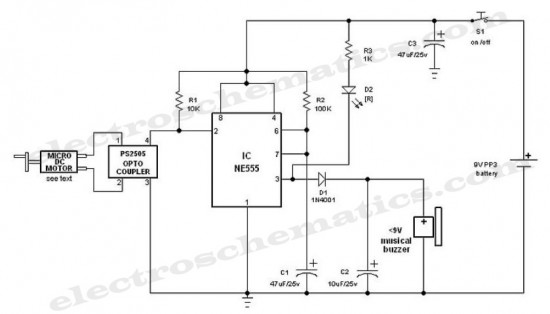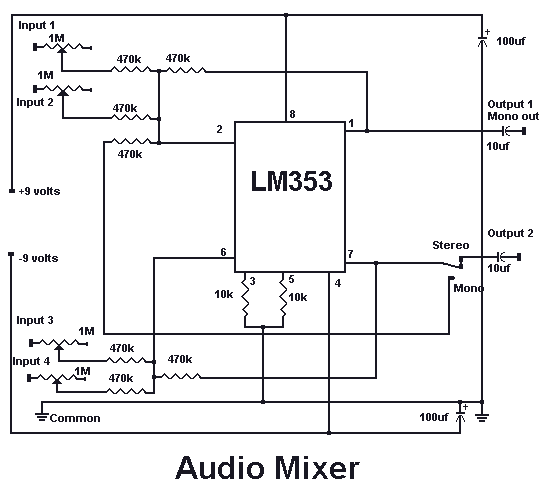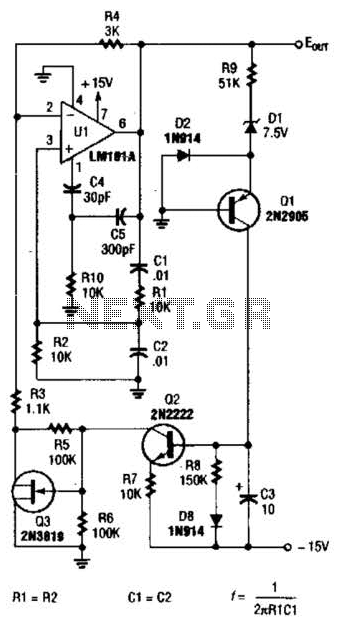
Circuits Schematic Mono Audio Mixer
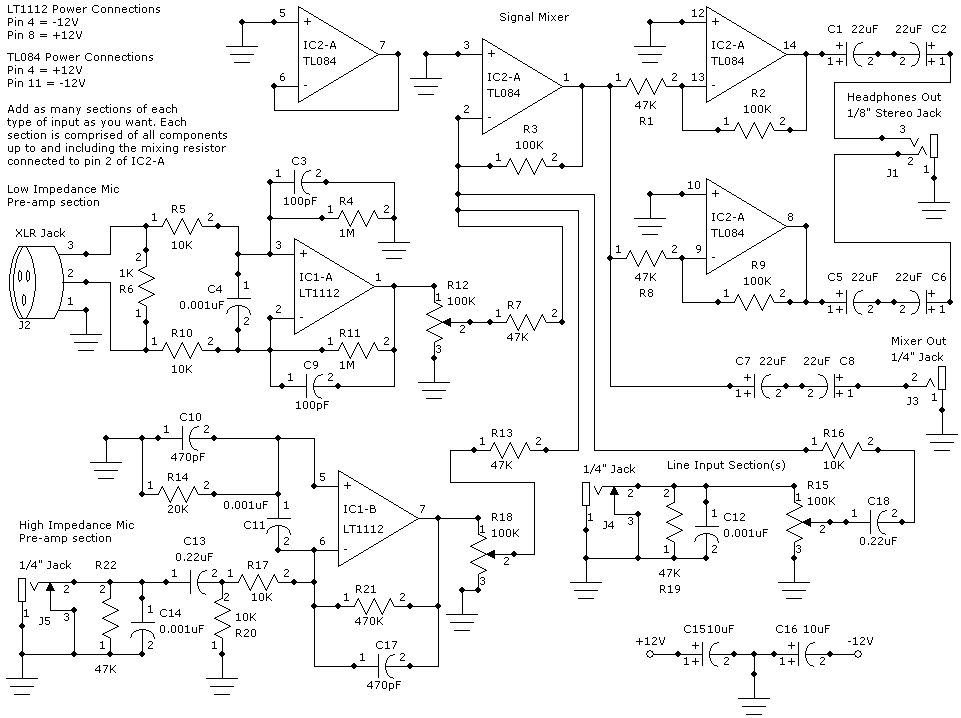
This weblog focuses on electronic circuit schematics, PCB design, DIY kits, and diagrams for various electronic projects. It features a mixer that demonstrates how to create microphone pre-amplifiers suitable for both low and high impedance microphones. The design utilizes the Everyman Babble op-amp, which possesses characteristics similar to the LT1112, although it is not an exact match. The board includes additional input channels and adheres to the provided schematic.
The mixer circuit described is designed to accommodate a variety of microphones, ensuring compatibility with both low and high impedance inputs. The microphone pre-amplifier is a critical component in audio applications, as it boosts the weak signals from microphones to a level suitable for further processing. The Everyman Babble op-amp is selected for this application due to its favorable characteristics, including low noise and high gain, making it ideal for audio signal amplification.
The schematic layout includes multiple input stages, allowing for the connection of different microphones. Each input stage is equipped with appropriate resistors and capacitors to manage impedance matching and signal conditioning. The circuit may also incorporate gain control features, enabling users to adjust the output level according to their requirements.
The board layout must be carefully designed to minimize noise interference and ensure optimal performance. Proper grounding techniques and component placement are essential to maintain signal integrity. Additionally, the use of high-quality capacitors and resistors will enhance the overall reliability and performance of the microphone pre-amplifier.
In summary, this mixer circuit serves as an excellent example for those interested in building their own microphone pre-amplifiers, providing a practical solution for enhancing audio signals from various microphone types.Welcome to the weblog where we discuss about electronic circuits schematics, PCB design, diy kits and electronic projects diagrams. This mixer shows you how to accomplish microphone pre-amps for low and hi impedance mics. Use the everyman babble op-amp you can acquisition that has agnate characteristics to the LT1112 (although it is not too bare
itself). The lath has added band inputs and follows the schematic. 🔗 External reference
The mixer circuit described is designed to accommodate a variety of microphones, ensuring compatibility with both low and high impedance inputs. The microphone pre-amplifier is a critical component in audio applications, as it boosts the weak signals from microphones to a level suitable for further processing. The Everyman Babble op-amp is selected for this application due to its favorable characteristics, including low noise and high gain, making it ideal for audio signal amplification.
The schematic layout includes multiple input stages, allowing for the connection of different microphones. Each input stage is equipped with appropriate resistors and capacitors to manage impedance matching and signal conditioning. The circuit may also incorporate gain control features, enabling users to adjust the output level according to their requirements.
The board layout must be carefully designed to minimize noise interference and ensure optimal performance. Proper grounding techniques and component placement are essential to maintain signal integrity. Additionally, the use of high-quality capacitors and resistors will enhance the overall reliability and performance of the microphone pre-amplifier.
In summary, this mixer circuit serves as an excellent example for those interested in building their own microphone pre-amplifiers, providing a practical solution for enhancing audio signals from various microphone types.Welcome to the weblog where we discuss about electronic circuits schematics, PCB design, diy kits and electronic projects diagrams. This mixer shows you how to accomplish microphone pre-amps for low and hi impedance mics. Use the everyman babble op-amp you can acquisition that has agnate characteristics to the LT1112 (although it is not too bare
itself). The lath has added band inputs and follows the schematic. 🔗 External reference
